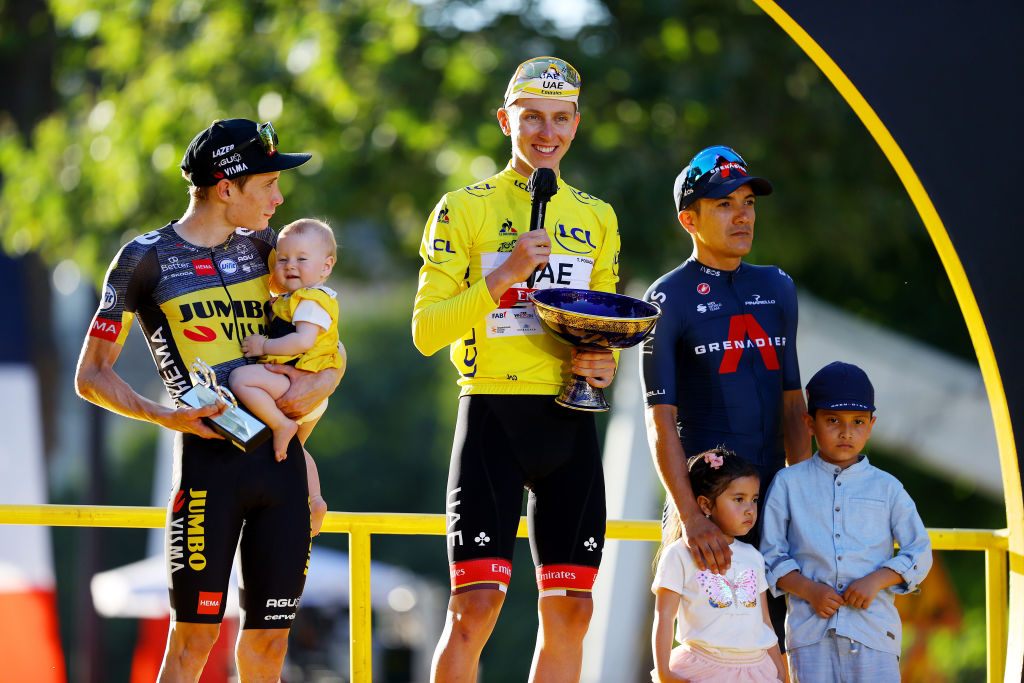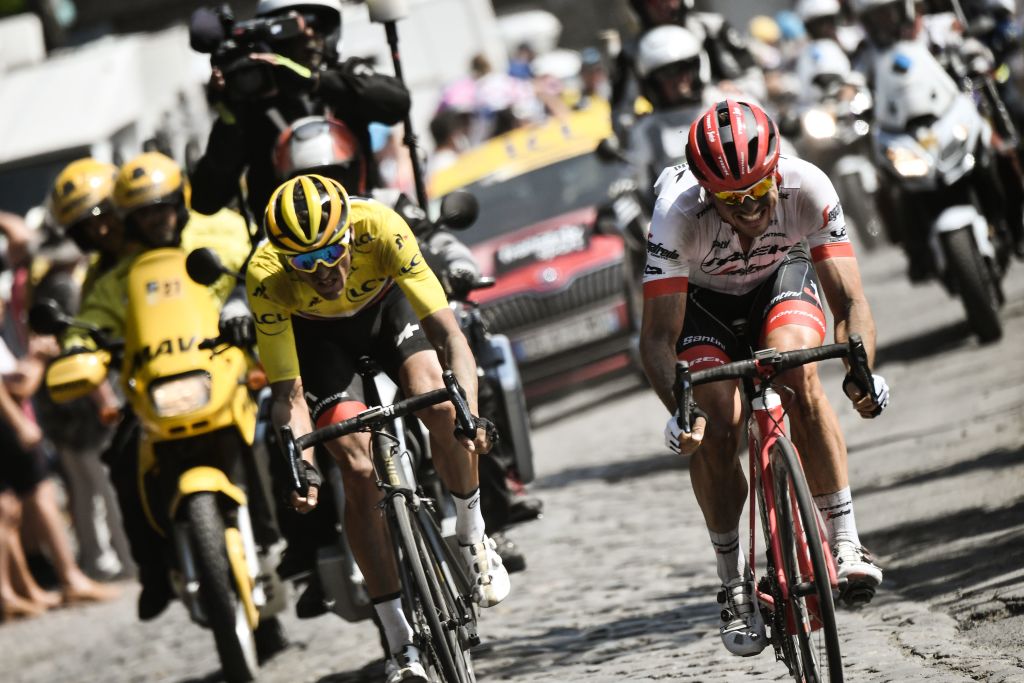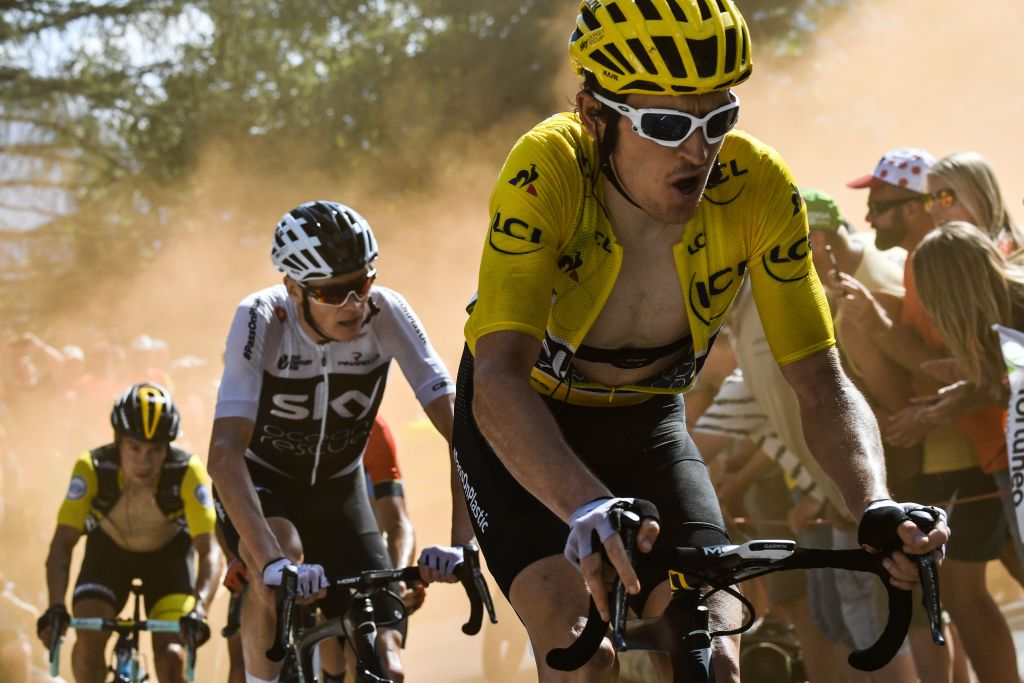Tour de France 2022 route: All the rumours ahead of the big reveal
Cobbles, altitude, Alpe d’Huez and another final time trial on the cards next July

Update: Tour de France 2022 route revealed
The 2022 Tour de France is set to pay a visit to the cobblestones of Paris-Roubaix and return to Alpe d’Huez for the first time in four years, with the Alps followed by the Pyrenees and another penultimate-day time trial to decide the yellow jersey ahead of the finale in Paris.
The route for the 109th edition of the Tour de France will officially be unveiled in Paris on Thursday but, as ever, details have been slipping through the cracks.
Regional French media outlets are often keen to report possible stage starts and finishes in their localities, while hotel bookings in certain towns can give an indication of the yellow juggernaut being set to pass through.
Thomas Vergouwen, who runs the Velowire website, has become the leading light in deciphering all this information to produce an overall picture of the route and its key points before Christian Prudhomme reaches the lectern in the Palais des Congrès.
In recent years, the general picture has proved very reliable and this year looks set to continue that trend, with more detail and a more precise schedule than ever.
Grand Départ
The 2022 Tour de France will start in Copenhagen, Denmark, on July 1. This is already official, as are the details of the three stages that will take place on Danish soil during the Grand Départ, before the race transfers to France.
This was supposed to be the start of this year’s edition of the Tour de France, but coronavirus pandemic and the European Championships in football forced the organisers to scrap that plan and push it back to 2022.
Get The Leadout Newsletter
The latest race content, interviews, features, reviews and expert buying guides, direct to your inbox!
The race will open with a flat 13-kilometre time trial in the Danish capital, which, with the first yellow jersey on the line, could tempt world champion Filippo Ganna into a Tour de France debut. The following two days feature traditional road stages, where the terrain is flat but the wind could have a say, making for a typically tense and nervy start to the race. Stage 2, from Roskilde, heads down a long stretch of coast and then crosses a 18km bridge over the Great Belt strait to the finish in Nyborg.
Stage 3 takes place on the western flank of Denmark, starting in Vejle and making its way down to Sønderborg, where a bunch sprint is the likely outcome.
Into France, and maybe Belgium

Following the three Danish stages, the race will transfer to France and, given the distance involved, there will be an additional and early rest day to facilitate this. Having started a day earlier than usual on the Friday, this allows the rest day to take place on the traditional Monday slot.
According to Velowire, the race will take the shortest trip possible from Copenhagen to France, with the race set to resume on the Tuesday in the very north east corner of France. This opens the door for a Classics-favoured first week, with a trip to the Roubaix pavé and an excursion into Belgium.
The Voix du Nord newspaper, which covers the Nord region of France, has the most information, reporting that stage 4 will finish in Calais, possibly starting just along the coast in Dunkirk, although details of the parcours remain scarce.
There is a stronger indication that the following day will be raced on cobblestones, starting in the centre of Lille and heading for Wallers-Arenberg, which is the heart of the Paris-Roubaix route. If so, the stage would almost inevitably incorporate some of the cobbled sectors from the Hell of the North, albeit in the opposite direction.
The Tour last visited the pavé in 2018, when John Degenkolb won the stage, while previous visits took place in 2015, 2014 - when the race was blown apart - and 2010.
The race is then set to cross the border into Belgium. Multiple outlets have reported that Binche will host a stage start, and that it could come with a finish in Longwy, which is back in France but a stone’s throw from the border with Belgium and also Luxembourg. This is said to be stage 6 and, while the details of the route itself are unclear, it would likely be a day for the puncheurs, with hilly terrain on offer in Wallonia and an uphill finish in Longwy that was used on the race’s last visit in 2017, where Peter Sagan got the better of Julian Alaphilippe.
The Planche des Belles Filles, in the nearby Vosges Mountains, has fast become a fixture of the Tour de France and has long been rumoured to be on the both the men’s route and the all-new women’s race for 2022. L’Est Républicain recently reported that this would indeed be the case, with the first true summit finish of the Tour thus coming on stage 7.
La Planche des Belles Filles was first used in 2012 and returned in 2014, 2017, 2019, and 2020, when Tadej Pogačar snatched the overall title in an uphill time trial. 2019 saw the finish line positioned on a steep gravel track beyond the traditional summit but it’s not clear if that would be repeated next year.
The Alps

After the early stages, the picture is that the race would then head towards the Alps via Switzerland. Swiss outlet RTS reports a stage 8 finish in Lausanne after a start in Dole, in what could be a totally flat stage or a late climb and descent if it approaches via the small Jura mountain range.
The same publication reports that the following stage would start in Aigle, home to the UCI, and finish in the French ski resort of Châtel, which is backed up in regional French paper Le Dauphiné Libéré. There are plenty of nearby climbs to make a mountain stage but, given the proximity of the two towns, a time trial - which would be around 30km and largely uphill - cannot be completely ruled out.
The race would then pause for its second rest day, and Velowire reports that this will be in Morzine, with the Haute-Savoie town - best known for hosting finishes down off the Col de Joux Plane - to host the start of stage 10 the following morning. The finish is said to be in Mégève, with the Col de Colombière and Col des Aravis a couple of the options en route.
While stage 10 would likely feature a descent towards the finish, reports suggest a spectacular set of back-to-back summit finishes as the Alps take a leading role in the 2022 Tour.
First up is a high-altitude finish all the way up at 2,400 metres on the Col du Granon, reported by various media outlets. The climb, which measures 11km and 9 per cent from the south, has only been used once before, all the way back in 1986. Only the nearby Col du Galibier has hosted a finish at higher altitude.
There are similarly multiple reports of a return to Alpe d’Huez, a staple of the Tour de France but not seen since Geraint Thomas’ victory in the yellow jersey in 2018. This stage would take place on Bastille Day, making for a festival atmosphere on the famous 21 hairpins.
Over to the Pyrenees
After the Alpine feast, reports suggest the race will then head over towards the Pyrenees, with the two mountain ranges linked in traditional fashion by a series of transition stages across the south of France. According to Velowire’s outline, this would make for flatter stages on both the middle weekends of the race, which are usually reserved for the most attractive mountain stages.
Either way, newspaper Le Progrès reports that the Tour will leave the Alps and head for a finish in the city of Saint Etienne on stage 13, before heading west to Mende the following day. That would be more of a medium-mountain day, with the short steep climb to the airport, once associated with Laurent Jalabert, last used in 2018, when Omar Fraile won, and before that in 2015 when Steve Cummings memorably played Romain Bardet and Thibaut Pinot off each other to win MTN-Qhubeka’s first stage on Mandela Day.
There are no details yet on the following stage but it would likely take the race to the base of the Pyrenees and, according to Velowire’s schedule, it would be on the Sunday ahead of the second rest day.
There is similar uncertainty surrounding the first day of the final week, with Foix referenced as a possible finish location for stage 16, but reports suggest another helping of back-to-back summit finishes in the Pyrenees as well as the Alps. La Dépêche du Midi and France Bleu Occitannie have both indicated that the race will feature a showpiece finale at Peyragudes, using the spectacularly steep altiport runway made famous by the James Bond movie Tomorrow Never Dies. This was used in 2017, when Romain Bardet won and Mikel Landa rode away from his team leader Chris Froome, drawing comparisons with the way Froome had ridden clear of Wiggins further down the mountain on the Col de Peyresourde in 2012.
The second summit finish is said to be at Hautacam, which, like Peyragudes, is around 1,500 metres in altitude. The traditional route up is 13.5km at an irregular gradient that averages out to 7.8 per cent, and has usually been preceded by the mighty Col du Tourmalet, as when Vincenzo Nibali won on the last visit in 2014.
According to Velowire, the race would then leave the Pyrenees but the general classification could yet swing, with another penultimate-day time trial on the cards. This would be the third year in a row and the fifth time in six years that this format has been employed for the final say in the destination of the yellow jersey.
Stage 19 would take the race away from the mountains – with Cahors referenced as a possible finish town – for what would likely be a flat or rolling stage where breakaways have often found fertile ground at such a late juncture.
The stage 20 time trial appears to have emerged not through newspaper reports but a Facebook post from a group of local construction workers who apparently weren’t aware of the need to keep things under wraps. La Dépêche du Midi picked up on the report and suggests a race against the clock from Lacapelle-Marival to Rocamadour, around 30km in length on rolling terrain.
Stage 21 is the traditional final-day procession into Paris, followed by laps of the Champs-Elysées and a final sprint ahead of the podium ceremonies.
Patrick is a freelance sports writer and editor. He’s an NCTJ-accredited journalist with a bachelor’s degree in modern languages (French and Spanish). Patrick worked full-time at Cyclingnews for eight years between 2015 and 2023, latterly as Deputy Editor.
